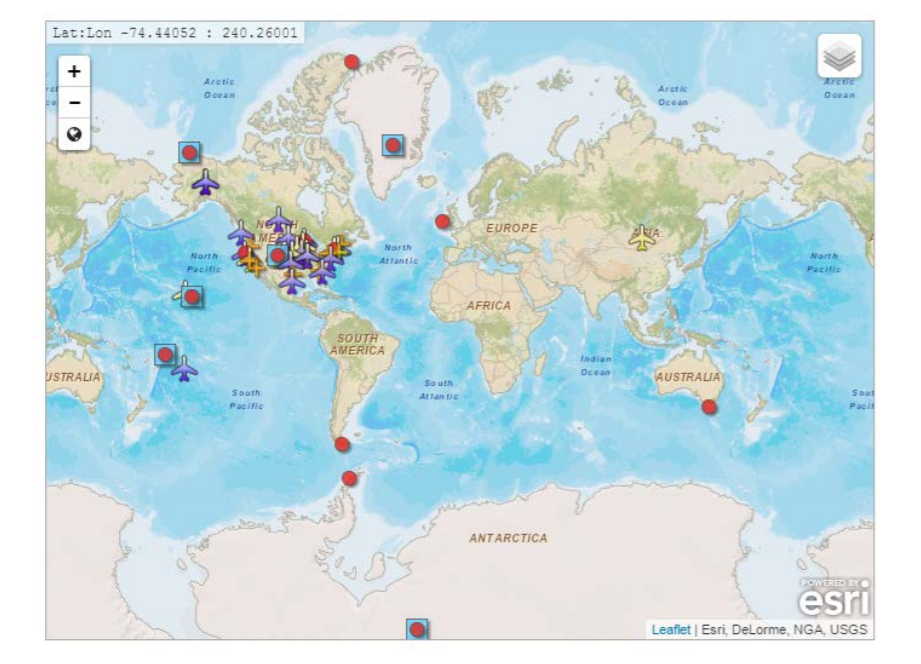
Figure 5: HATS Stations. Circles=flask sites, boxes=in situ sites, planes=airborne sites. For more details: see https://gml.noaa.gov/hats/flask/flasks.html. Credit ESRL GML.
The National Oceanic and Atmospheric Administration’s Global Monitoring Laboratory maintains a global flask and in situ network for the measurement and analysis of halocarbons and other atmospheric trace gases. The network started in 1977 with the measurement of three trace gases (nitrous oxide, CFC-11, CFC-12) at five flask locations, and has grown to include over 40 trace gases at over 30 locations, along with airborne campaigns employing both flask and in situ monitoring. The purpose of this work is to study atmospheric trace gases that affect climate change, stratospheric ozone depletion, and air quality. Some atmospheric trace gases (e.g., SF6) provide important information on atmospheric transport. Areas of common interest with NDACC include (1) species measured by Fourier Transform Infrared Spectrometers (halocarbons, O3, HCl, HF, CO, N2O, CH4), water vapor, ozone, and Lidar instruments; and (2) co-located stations at Barrow, Boulder, Mauna Loa, Summit, American Samoa, Palmer, and South Pole.
HATS personnel are located in Boulder, Colorado, USA, and receive support through personnel associated with NOAA baseline observatories and collaborative sampling efforts. Through collaborations with the National Aeronautics and Space Administration (NASA) and the National Science Foundation (NSF), GML operates a number of in situ and flask collection instruments from NASA and NSF high-altitude, manned, and unmanned (UAS) aircraft up to 21 km, and balloon platforms up to 32 km. These measurements have been associated with high-altitude campaigns that have spanned the globe since 1991. HATS began vertical profiling of many trace gases from flask samples collected on NOAA-operated, small aircraft (<=25000 ft asl) in 2004, and continues at 18 sites.
The HATS Network measures over 40 trace gases in the atmosphere, including nitrous oxide (N2O); chlorofluorocarbons (CFCs, CFC-11, -12, -113, -115); hydrochlorofluorocarbons (HCFCs, HCFC-22, -141b, -142b); hydrofluorocarbons (HFCs, HFC-134a, 143a,152a, 125, 32, 227ea, 365mfc); methyl halides (CH3Cl, CH3Br, CH3I); chlorinated solvents (CHCl3, CH3CCl3, CCl4, C2Cl4, CH2Cl2) bromocarbons (CHBr3, CH2Br2); selected hydrocarbons (C2H2, C3H8, nC4H10, C5H12, nC5H12, C6H6, nC6H14), as well as COS, SF6, CF4, C2F6, NF3, and SO2F2. Water vapor (H2O) and ozone (O3) also have been measured on NASA airborne campaigns since 2005.
NOAA HATS provides data relevant to atmospheric indices, including the Annual Greenhouse Gas Index (AGGI), Ozone Depleting Gases Index (ODGI), equivalent effective stratospheric chlorine (EESC), total bromine, and total fluorine in the atmosphere. This research has resulted in numerous peer-reviewed publications, and has contributed to international assessments of climate and ozone depletion. Data are available via anonymous ftp, and discussions are available at the HATS website.
Dr. Stephen Montzka leads the HATS group and is the Principal Investigator (P.I.) responsible for the gas chromatograph and mass selection detection of flask samples collected from surface sites and aboard regional aircraft that sample the troposphere. Dr. Bradley Hall is the P.I. in charge of trace-gas standards research, and the preparation of most of the group’s trace gas standards. Geoffrey S. Dutton is the P.I. responsible for in situ measurements at stations located at Pt. Barrow, Alaska; Summit, Greenland (discontinued); Niwot Ridge, Colorado; Mauna Loa, Hawaii; Cape Matatula, American Samoa; and South Pole, Antarctica. Drs. Fred L. Moore and Eric J. Hintsa are Co-P.I.s responsible for high-altitude airborne measurements on NASA aircraft. Dr. Lei Hu is the P.I. of an atmospheric inversion modelling project which aims to estimate emissions of ozone-depleting substances and other gases.
Updated - September 2021